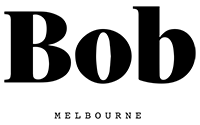Bob's Wardrobe: Six Months Shopping-Free with Amanda Berry
Think about all of the clothes you have purchased in the past six months. How many times have you worn each item? Were there good investments? Perhaps some bad ones, too? These are the questions that Amanda Berry - co-founder and director at Bob - found herself pondering. Like the beauty industry, the fashion industry is perhaps an afterthought when it comes to sustainability; with items such as single use plastic, food waste, and the way we recycle much hotter topics.
In 2014, over 16 million tons of textile waste was generated in America alone, according to the U.S. EPA. Of this amount, 2.62 million tons were recycled, 3.14 million tons were combusted for energy recovery, and 10.46 million tons were sent to the landfill.
With these alarming figures in mind, and in an effort to educate herself on fashion waste, Amanda Berry - a fashion lover - decided to set herself the ultimate challenge in her quest to reduce her footprint; no clothes shopping for six months.
Here, Amanda shares what she learned, the biggest challenges, and how she’ll approach shopping in the future.
Talk us through your decision not to purchase clothes for six months. What were your clothes shopping habits like beforehand?
It began after binge-watching the documentary War On Waste last January while on the plane to Perth.
I obviously knew about the impact of items like plastic bags and single use coffee cups but hadn’t put too much thought into fashion or my own shopping habits. The documentary showed piles of fast fashion going to landfill and young women feeling like they had to be in a new outfit every day. It was startling, but it sparked a conversation with my partner and we made a pact to not buy any fashion for six months.
I wouldn’t say I was an excessive shopper previously, but I wasn’t terribly mindful of the types of purchases I was making in terms of quality or longevity in an item.
Was it harder than you thought it would be - talk us through the biggest challenges.
It honestly wasn't as hard as i thought it would be, I learnt to re-wear what was already in my wardrobe. I borrowed dresses for events if I didn't have anything. The biggest challenge was just ignoring my Instagram feed, which is full of marketing and selling, so I unsubscribed from some of my favourite brand’s emails during the six month period. I did get bored of my clothes by the end, but I really enjoyed the challenge.
What did you learn about shopping habits and how we as a society approach fashion and shopping?
I realised that we tend to shop for every occasion. I learnt that no one actually remembers what you wore or if you outfit repeat. I think as a society we shop to reward ourselves, a new pair of jeans or shoes makes us feel good momentarily, but long-term we just end up with a wardrobe full of clothes with their tags still on.
Why would you recommend this to someone to try?
I think it’s a great reminder to slow down, to be less impulsive and think about the types of brands you support. I now really enjoy choosing an item from a local designer and purchasing it knowing it will be still in my wardrobe in five years. I think it would be harder for some people than others, but it’s a challenge that was life changing to me so I’d urge everyone to do it.
How did you feel at the end of the challenge?
I felt a real sense of accomplishment. I reached the end of the challenge and realised there were many things I could donate or sell, and as a result my wardrobe has become less cluttered. I don’t feel the pressure of buying what’s on trend so much anymore, which is pretty freeing. The challenge has completely changed the way I shop, not just for fashion but everything.

